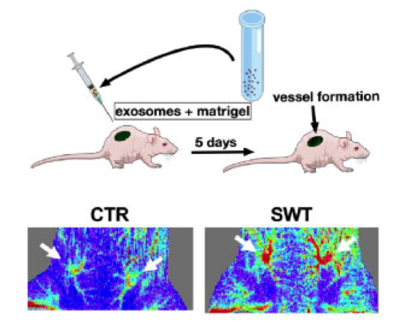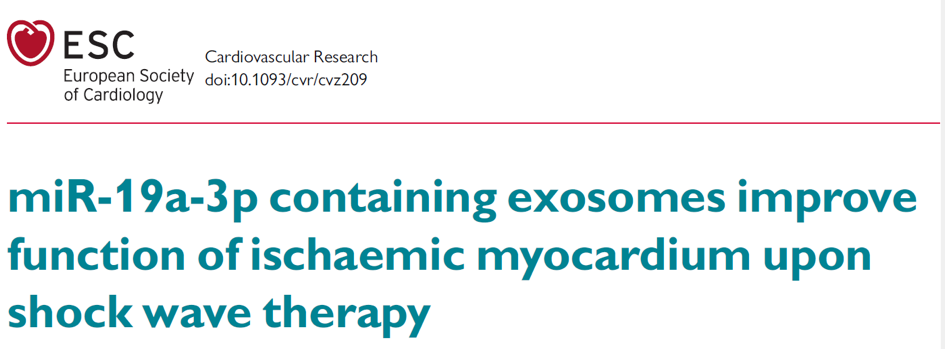
Gollmann-Tepeköylü C, Leo Pölz et al., 2019
University Clinic of Cardiac Surgery, Medical University of Innsbruck, Austria.
Austrian Cluster for Tissue Regeneration, Vienna, Austria.
Background:
As many current approaches for heart regeneration exert unfavorable side-effects, the induction of endogenous repair mechanisms in ischemic heart disease is of particular interest. Recently, exosomes carrying angiogenic miRNAs have been described to improve heart function. However, it remains challenging to stimulate specific release of reparative exosomes in ischemic myocardium. In the present study, we sought to test the hypothesis that the physical stimulus of shock wave therapy (SWT) causes the release of exosomes. We aimed to substantiate the pro-angiogenic impact of the released factors, to identify the nature of their cargo, and to test their efficacy in vivo supporting regeneration and recovery after myocardial ischemia. 1
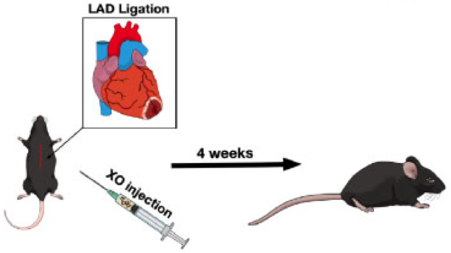 |
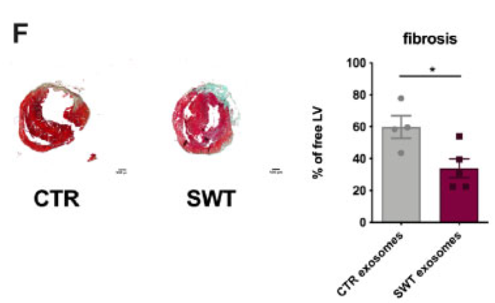 |
Figure 3 (D & F) Experimental scheme for testing efficacy of exosomes in a myocardial infarction model.(F) Representative images of herats displaying post-infarction fibrosis, as assessed by Masson`s trichotome staining 28 days after treatment, in mice treated with control and SWT exosomes, and quantitative comparison of fibrotic tissue in both groups. 1
Mechanical stimulation of ischemic muscle via SWT caused extracellular vesicle (EV) release from endothelial cells both in vitro and in vivo. Exosomes exhibited angiogenic properties activating protein kinase b (Akt) and extracellular-signal regulated kinase (ERK) resulting in enhanced endothelial tube formation and proliferation. miR-19a-3p was identified as responsible cargo, antimir-19a-3p antagonized angiogenic exosome effects. Exosomes and target miRNA were injected intramyocardially in mice after left anterior descending artery (LAD) ligation. Exosomes resulted in improved vascularization, decreased myocardial fibrosis and increased left ventricular ejection fraction as shown by transthoracic echocardiography.1
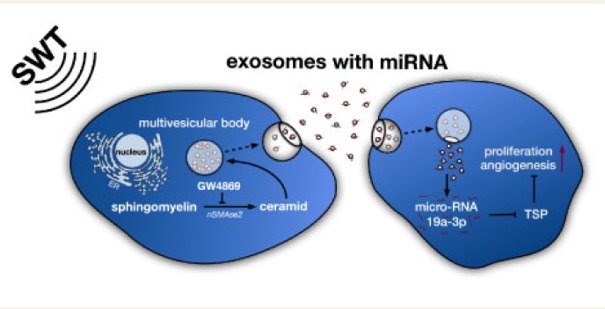 |
Figure 6 Suggested mechanism of SWT-induced angiogenic effects. |
Beneficial effects of Spark Wave Therapy:
- Induced angiogenesis
- Decreased myocardial fibrosis
- Improved left ventricular function
- Innovative approach for the regeneration of ischemic myocardium!
Reference:
